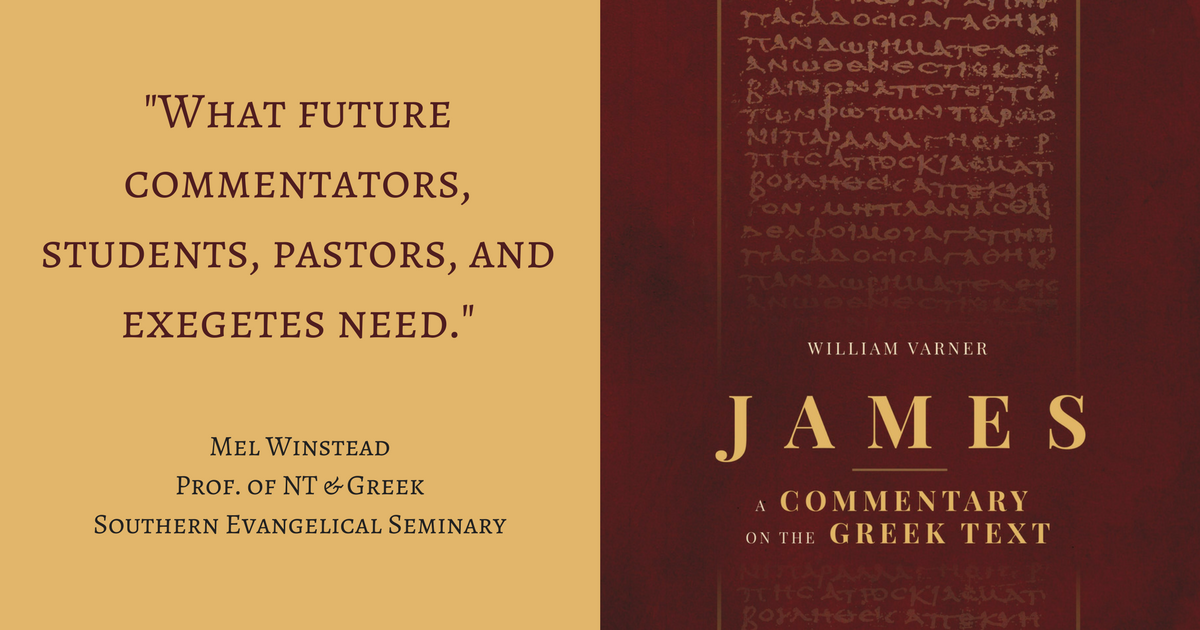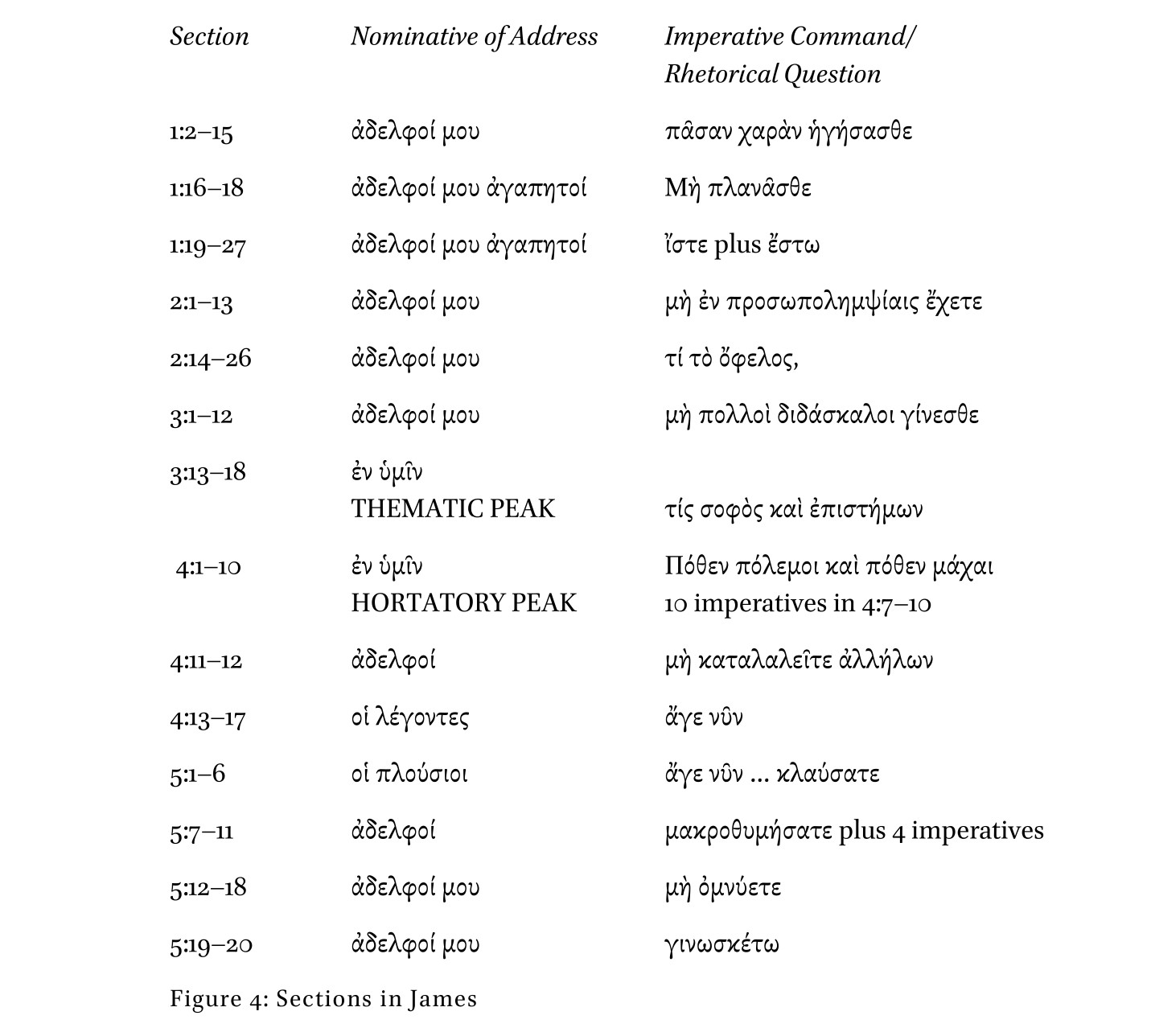
One of the best types of resources for preparing sermons, lessons, or for improving your own Greek, is a comprehensive commentary on the Greek text you are studying.
One that immediately comes to mind is the NIGTC commentary on Hebrews by Ellingworth. Many of the other NIGTC volumes (despite the series title!) do not comment much on the Greek syntax or textual variants. Ellingworth’s volume, however, famously works in depth in the language, seeking out interpretive options to hunt down the most likely conclusions.
This new commentary on James by William Varner is much the same. It is truly a commentary not on the theology of James, and not on the comments of other commentators, but on the Greek text of James itself. The focus is purposefully linguistic, using tools such as discourse analysis, reasoned eclectic text-criticism, and thorough research in the traditional Greek grammars and in newer resources such as GE (aka BrillDAG) and THGNT.
Each section first establishes the text by presenting the Greek text (which is great for referencing while reading the commentary) and discussing textual variants. Next comes, uniquely, sentence flows! Some commentaries here and there present sentence flows or block diagrams, and Varner does as well. This inclusion is a student’s dream to help him visualize the text. After the sentence flows are the contextual comments and exegetical comments.
One of the greatest aspects of this commentary is its thorough use of discourse analysis. Varner has written a work on James focusing solely on discourse analysis, and that work has been integrated into this commentary. Consider, right off the bat, this extremely helpful chart in the introduction laying out the discourse as a whole.

Note that there is a difference between a chart that simply divides the text into paragraphs or sections (called an ‘outline’) and a chart that portrays the features of discourse. This chart uses the discourse feature of a vocatival nominative (generally “brothers”) plus an imperative or rhetorical question to demarcate the beginning of each section. This approach takes the subjectivity out of dividing the letter into sections, which can often affect interpretation (consider the infamous problem of paragraph division in Eph 5:21-22). Varner also locates a thematic and hortatory peak of the letter, a concept developed from Longacre.
The exegetical comments dive deeply into the Greek text and lingers there. There is no rush to get to theology; the language comes first. For this reason, I’d say Varner’s commentary would be a useful guide (even more comprehensive than the EGGNT volume) to the Greek text of James. If you want to improve your Greek, translate through James on your own then read the sections by Varner afterward, correcting your work as you go. It would be a blessing to your Greek skills.
Preview or buy Varner’s commentary here.
